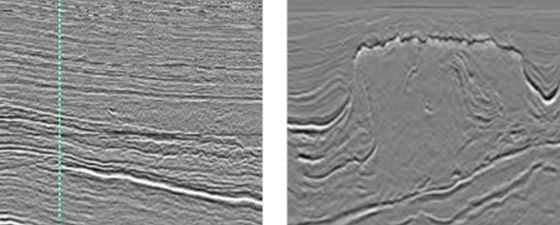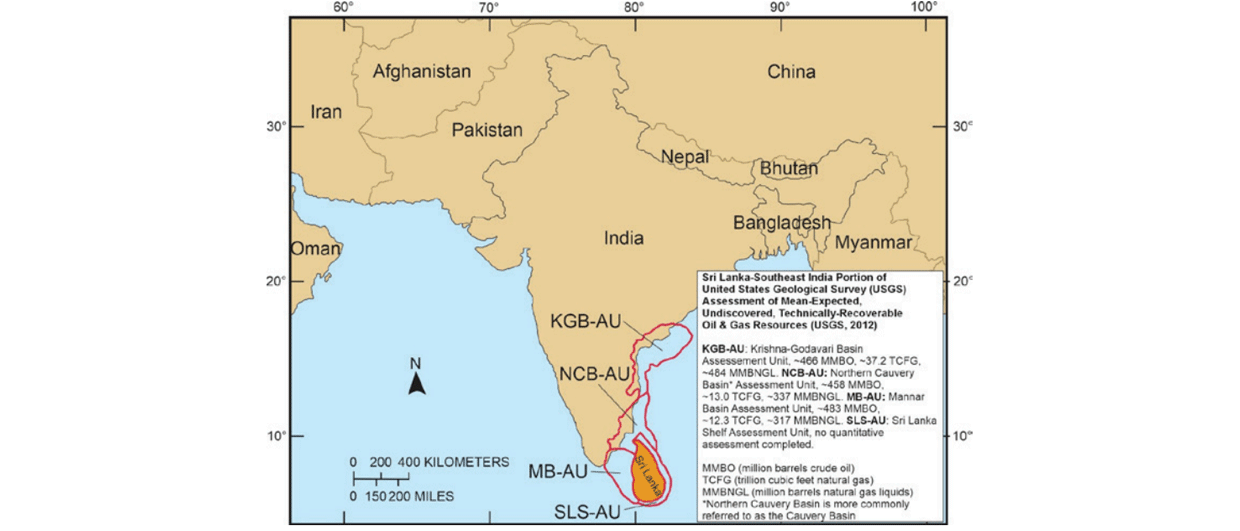A brief overview of the history and future of oil and gas exploration in Latin America.
Explorers first stepped out from prolific onshore basins into shallow water just after World War II, using simple ‘trendology’ supported by early seismic and gravity datasets. Plate tectonics and seismic stratigraphy supported by huge integrated geophysical datasets have since guided industry out to ultra-deepwater, yielding billions of barrels in a quest that will continue until we are in a post-carbon world.
Trendology Wins on Shelf
Closed’ and habitat of ‘open’ systems in Latin America and the Caribbean.
Stepping out from giant onshore fields in south Louisiana into geologically contiguous strata in the shallow-water Gulf of Mexico (GoM) was the industry’s first logical move offshore. Being an easy mobilization distance from the US GoM, Mexico’s Tampico area (the Golden Lane extension) and Salina Basins, plus the Gulf of Paria and Atlantic Columbus Basin of Trinidad, were all early beneficiaries of these new engineering capabilities, resulting in major shallow-water shelf discoveries in the 1950s and early ’60s. These successes were maximized by rapidly improving seismic reflection technology, but the foundation of these early discoveries was ‘trendology’.
As offshore exploration became a global pursuit, industry expanded the effort in Latin America and the Caribbean (LAC), but failure or less than stellar early success was the result on the shallow shelf outboard of more marginal or less geologically continuous onshore production in Cuba, the northern margin of South America, Suriname, Peru’s Talara Basin, and several basins offshore Brazil and Argentina. Something more was needed.
Technology Wins in Deepwater
Teaser results (outside the core GoM) from continental shelf drilling across the region then led to strong interest in the deepwater. IOCs were able to start de-risking these new frontiers utilizing data from DSDP and ODP programs, along with valuable new plate tectonic and sequence stratigraphy models. Combined with large-scale 3D and ever-improving deepwater production technology, this enabled focused and highly successful deepwater campaigns in Brazil’s Campos and Santos Basins and more recently in Guyana, while extending the Perdido Foldbelt trend from the US to Mexico.
Frontier exploration is a risky game, however, as all this geotechnical rigor has yielded fairly high profile failures in Cuba, Barbados, Caribbean Nicaragua, Suriname, north-east Brazil and Uruguay, plus marginal or gas-only success in Colombia, Venezuela, Trinidad, French Guiana, north-central Brazil and the Malvinas (Falklands).
Tale of Two Systems
With all the activity of the last sixty years the producing petroleum systems that have yielded major success in LAC fall into two general families that can be informally termed ‘open’ and ‘closed’.
Seismic Examples from ‘open’ and ‘closed’ systems, both harboring billions of barrels of oil.
Closed’ systems are highly structured with super seals and readily definable traps and boundaries on seismic data. In LAC these are Mexico’s Salina-Sureste Basin and Brazil’s Campos-Santos, and to a lesser extent the US-Mexico Perdido Foldbelt and Brazil’s Sergipe-Alagoas. These basins have been shown to be prolific and relatively low risk, and have yet to reach their peak for production.
The hydrocarbon habitat in ‘open’ systems, conversely, are usually not obviously structured, with poorly defined boundaries on seismic, best characterized by the recent Guyana Stabroek trend. (Locally they can be highly structured, as along the Caribbean margin, including shallow-water Trinidad.) Vast regions possibly harboring accumulations in ‘open’ systems remain barely touched by the drill bit, from deepwater Barbados to Argentina on the Atlantic side, and higher risk Mexico to Tierra del Fuego on the Pacific side. A major campaign is presently underway within IOCs and NOCs to focus in on Stabroek look-alikes using large geophysical datasets, including multibeam for seep detection. This will result in establishing new producing provinces, but at the present industry pace some large productive complexes may go undiscovered while we move to that post-carbon world.
This hydrocarbon hot spot feature is brought to you in association with NVentures.





